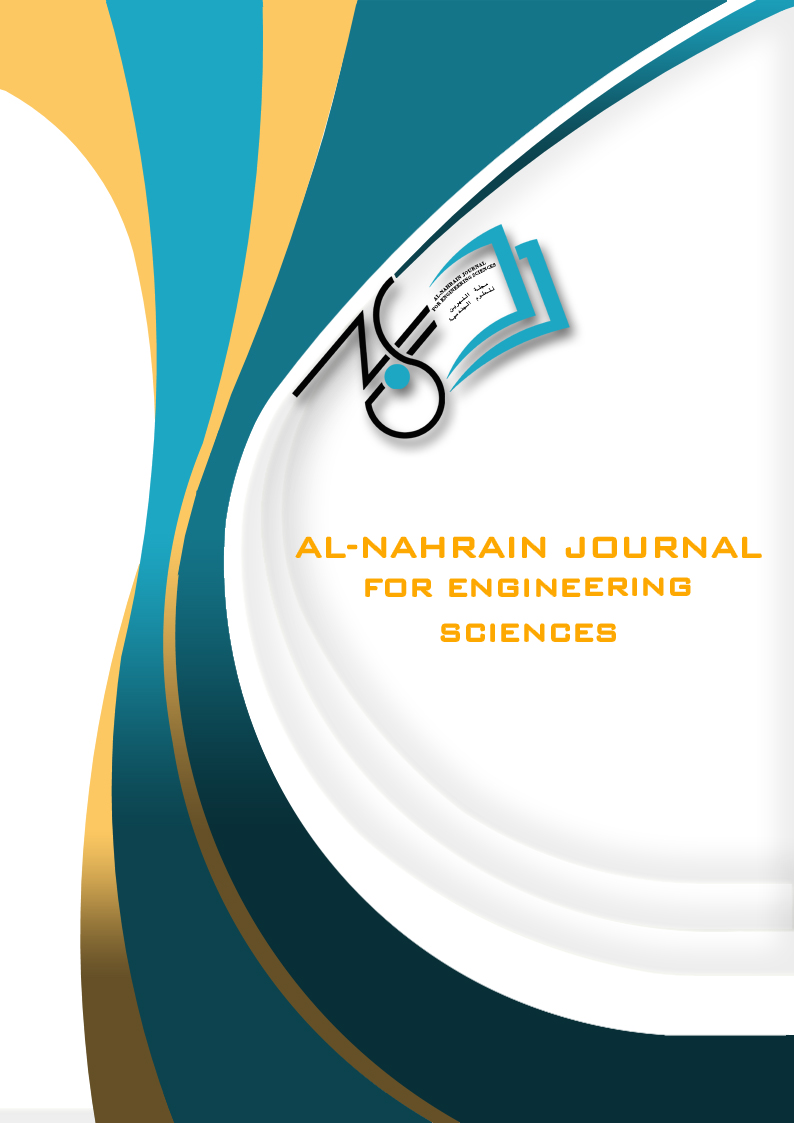Evaluation of Temperature Distribution on Human Skin During Philaser Tattoo Removal
DOI:
https://doi.org/10.29194/NJES.28030436Keywords:
Philaser, IR Camera, Laser Skin Interaction, Shapiro-Wilk, Patient Age, Tattoo RemovalAbstract
Many difficulties were recorded during laser-assisted tattoo removal. But most of them remain unknown. The recent literatures on laser tattoo removal focuses more on removal methods and systems than on side effects, such as temperature increase over tissue and ideal treatment parameters. This study aims to assess the surface temperature in compliance with eyebrow tattoo removal. The study was carried out for 55 patients aged between 22 and 43 years. The treatment was performed using a Nd:YAG laser (1064nm, Phi laser system) with an energy of 1000 mJ, a frequency of 3Hz, and a spot size of 8mm. The surface temperature of the skin during tattoo removal process was measured with a FLIR thermal camera. The results were analyzed by testing the normal state of distribution. The Shapiro-Wilk and Kolmogorov-Smirnov tests were used. All patients finished the full treatment of three laser sessions to achieve the goal of total removal. After temperature comparison, the results showed a significant influence of skin nature and patients' age on temperature distribution on skin, as for older patients, the energy absorption increased. Additionally, patients with darker skin tones exhibited greater absorption. The benefit of deepening understanding appeared in the Temperature distribution in the tissues of the affected area and the surrounding area during laser irradiation, as it provides a guiding and reference function for the effect of photothermal therapy.
Downloads
References
S. G. Ho and C. L. Goh, “Laser tattoo removal: a clinical update,” J. Cutaneous Aesthetic Surg., vol. 8, no. 1, pp. 9–15, 2015. DOI:10.4103/0974-2077.155074 DOI: https://doi.org/10.4103/0974-2077.155066
L. Carroll and T. R. Humphreys, “LASER-tissue interactions,” Clin. Dermatol., vol. 24, no. 1, pp. 2–7, 2006. DOI:10.1016/j.clindermatol.2005.11.002 DOI: https://doi.org/10.1016/j.clindermatol.2005.10.019
R. G. Gould, “The LASER, light amplification by stimulated emission of radiation,” in Ann Arbor Conf. Optical Pumping, Univ. Michigan, vol. 15, no. 128, p. 92, Jun. 1959.
T. Maiman, “Optical and microwave-optical experiments in ruby,” Phys. Rev. Lett., vol. 4, pp. 564–566, 1960. DOI:10.1103/PhysRevLett.4.564 DOI: https://doi.org/10.1103/PhysRevLett.4.564
M. M. Zaret, G. M. Breinin, H. Schmidt, H. Ripps, I. M. Siegel, and L. R. Solon, “Ocular lesions produced by an optical maser (laser),” Science, vol. 134, no. 3489, pp. 1525–1526, 1961. DOI:10.1126/science.134.3489.1525 DOI: https://doi.org/10.1126/science.134.3489.1525
M. Zhang, X. Gong, T. Lin, Q. Wu, Y. Ge, Y. Huang, and L. Ge, “A retrospective analysis of the influencing factors and complications of Q-switched lasers in tattoo removal in China,” J. Cosmet. Laser Ther., vol. 20, no. 2, pp. 71–76, 2018. DOI:10.1080/14764172.2017.1383144 DOI: https://doi.org/10.1080/14764172.2017.1376096
M. A. Ansari, M. Erfanzadeh, and E. Mohajerani, “Mechanisms of laser-tissue interaction: II. Tissue thermal properties,” J. Lasers Med. Sci., vol. 4, no. 3, p. 99, 2013. DOI:10.22037/jlms.v4i3.2166
F. B. Goldsmith, “Coppicing—a conservation panacea?,” in Ecology and Management of Coppice Woodlands, pp. 306–312, 1992. DOI: https://doi.org/10.1007/978-94-011-2362-4_16
B. Bindu, A. Bindra, and G. Rath, “Temperature management under general anesthesia: Compulsion or option,” J. Anaesthesiol. Clin. Pharmacol., vol. 33, no. 3, pp. 306–316, 2017. DOI:10.4103/joacp.JOACP_334_16 DOI: https://doi.org/10.4103/joacp.JOACP_334_16
R. Yim, J. Haddock, and D. Needell, “Statistical learning for best practices in tattoo removal,” arXiv preprint, arXiv:2105.09065, 2021. DOI: https://doi.org/10.1137/21S1421325
F. Pazhoohi and A. Kingstone, “The effect of movie frame rate on viewer preference: An eye tracking study,” Augmented Hum. Res., vol. 6, pp. 1–5, 2021. DOI:10.1007/s41133-021-00044-8 DOI: https://doi.org/10.1007/s41133-020-00040-0
A. E. Ortiz and T. S. Alster, “Rising concern over cosmetic tattoos,” Dermatol. Surg., vol. 38, no. 3, pp. 424–429, 2012. DOI:10.1111/j.1524-4725.2011.02243.x DOI: https://doi.org/10.1111/j.1524-4725.2011.02202.x
L. A. Goldsmith, Physiology, Biochemistry, and Molecular Biology of the Skin, 1st ed. New York, NY, USA: Oxford Univ. Press, 1991.
A. Kirimtat, O. Krejcar, A. Selamat, and E. Herrera-Viedma, “FLIR vs SEEK thermal cameras in biomedicine: Comparative diagnosis through infrared thermography,” BMC Bioinformatics, vol. 21, pp. 1–10, 2020. DOI:10.1186/s12859-020-03601-0 DOI: https://doi.org/10.1186/s12859-020-3355-7
A. Kirimtat and O. Krejcar, “FLIR vs SEEK in biomedical applications of infrared thermography,” in Proc. 6th Int. Work-Conf. Bioinformatics Biomed. Eng. (IWBBIO), Granada, Spain, Apr. 2018, pp. 221–230. DOI:10.1007/978-3-319-78723-7_19 DOI: https://doi.org/10.1007/978-3-319-78759-6_21
Z. Nelson, L. O’Neill, A. H. Fisher, S. D. Kozusko, K. Addagatla, and D. Bird, “Postoperative detection of free flap congestion in a Fitzpatrick skin type VI patient using the FLIR thermal imaging camera: A case report and literature review,” Plast. Reconstr. Surg. Global Open, vol. 9, no. 10S, pp. 127–128, 2021. DOI:10.1097/01.GOX.0000804561.81290.3e DOI: https://doi.org/10.1097/01.GOX.0000799756.22231.87
D. S. Filippychev, “Computing the particle paths in an open-trap sharp-point geometry,” Comput. Math. Model., vol. 12, no. 3, pp. 193–210, 2001. DOI:10.1023/A:1010668920934 DOI: https://doi.org/10.1023/A:1012589205469
L. Hernandez, N. Mohsin, F. S. Frech, I. Dreyfuss, A. Vander Does, and K. Nouri, “Laser tattoo removal: Laser principles and an updated guide for clinicians,” Lasers Med. Sci., vol. 37, no. 6, pp. 2581–2587, 2022. DOI:10.1007/s10103-022-03527-6 DOI: https://doi.org/10.1007/s10103-022-03576-2
S. Ariyaratnam and J. P. Rood, “Measurement of facial skin temperature,” J. Dent., vol. 18, no. 5, pp. 250–253, 1990. DOI:10.1016/0300-5712(90)90006-3 DOI: https://doi.org/10.1016/0300-5712(90)90022-7
S. S. Shapiro and M. B. Wilk, “An analysis of variance test for normality (complete samples),” Biometrika, vol. 52, no. 3–4, pp. 591–611, 1965. DOI:10.1093/biomet/52.3-4.591 DOI: https://doi.org/10.1093/biomet/52.3-4.591
Downloads
Published
Issue
Section
License
Copyright (c) 2025 Zahra Amer Salman, Ziad Tarik Al-dahan, Ahmed Al-Hamaoy

This work is licensed under a Creative Commons Attribution-NonCommercial 4.0 International License.
The authors retain the copyright of their manuscript by submitting the work to this journal, and all open access articles are distributed under the terms of the Creative Commons Attribution-NonCommercial 4.0 International (CC-BY-NC 4.0), which permits use for any non-commercial purpose, distribution, and reproduction in any medium, provided that the original work is properly cited.














